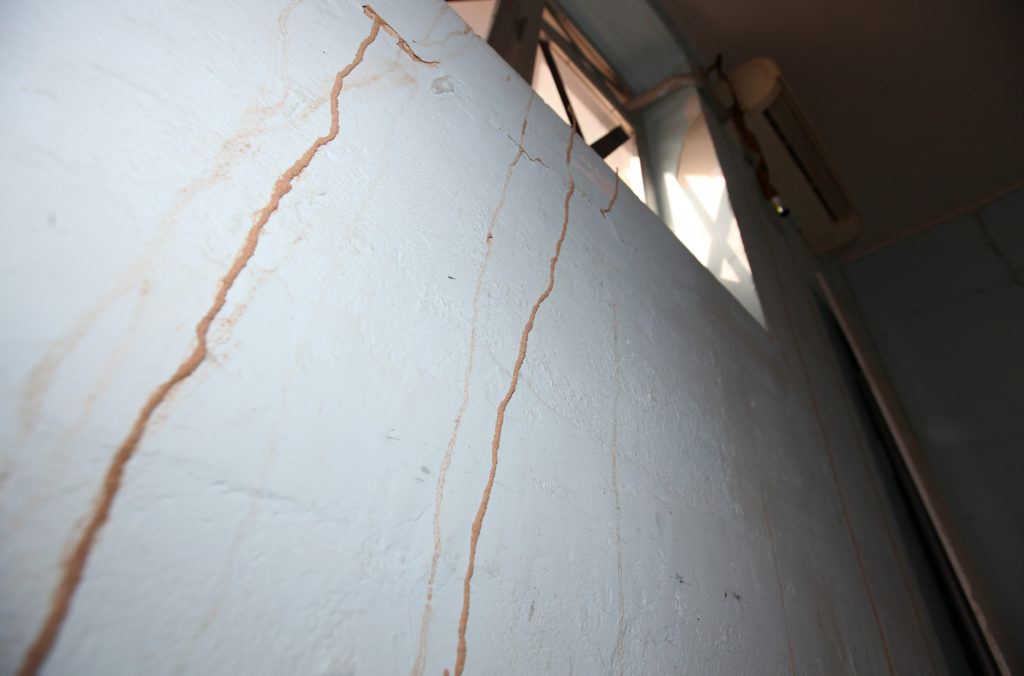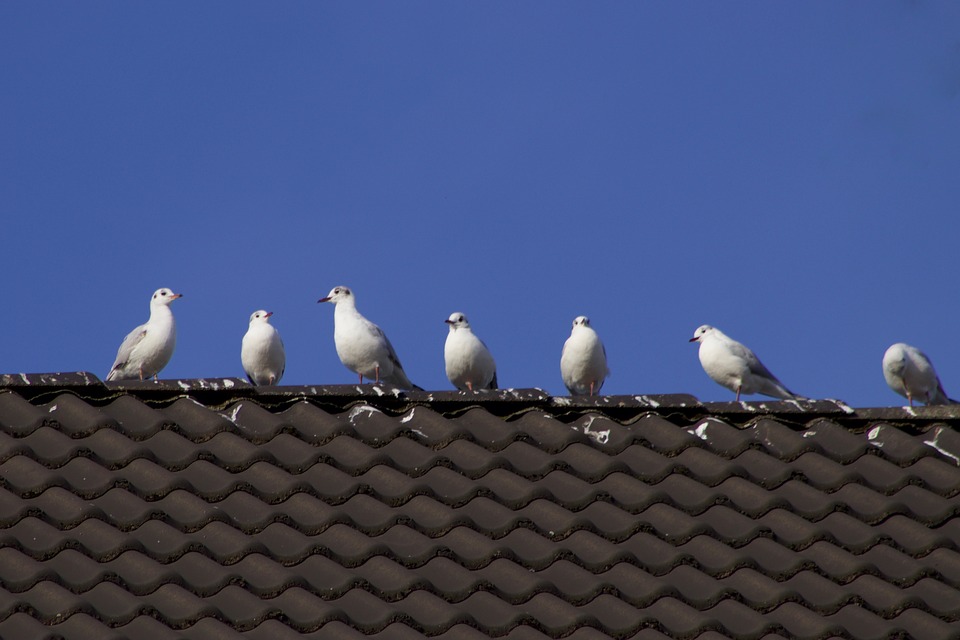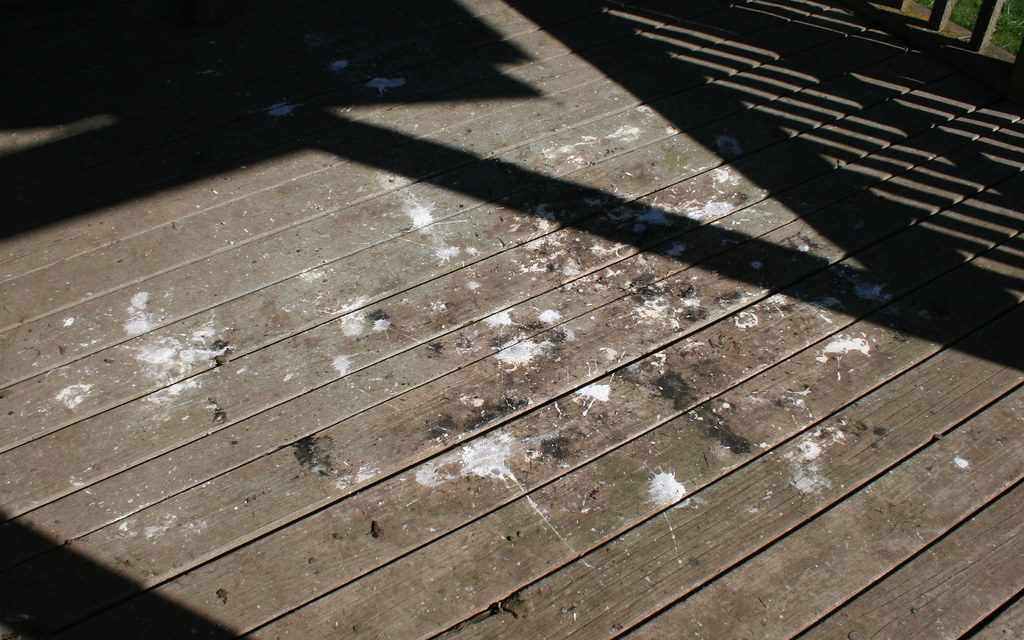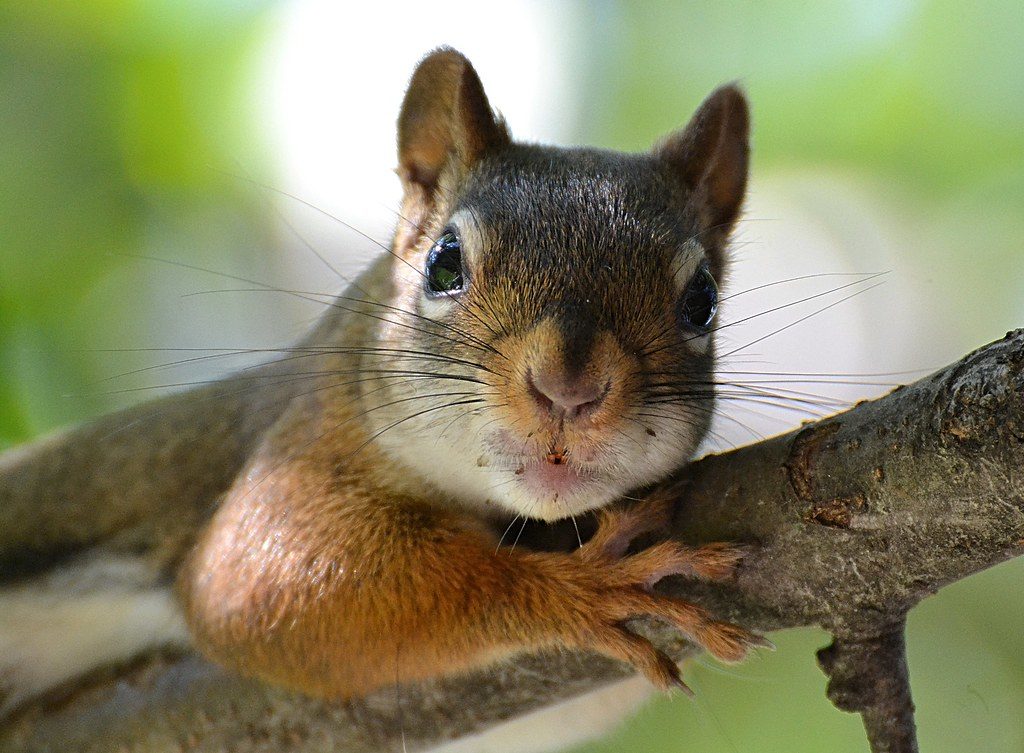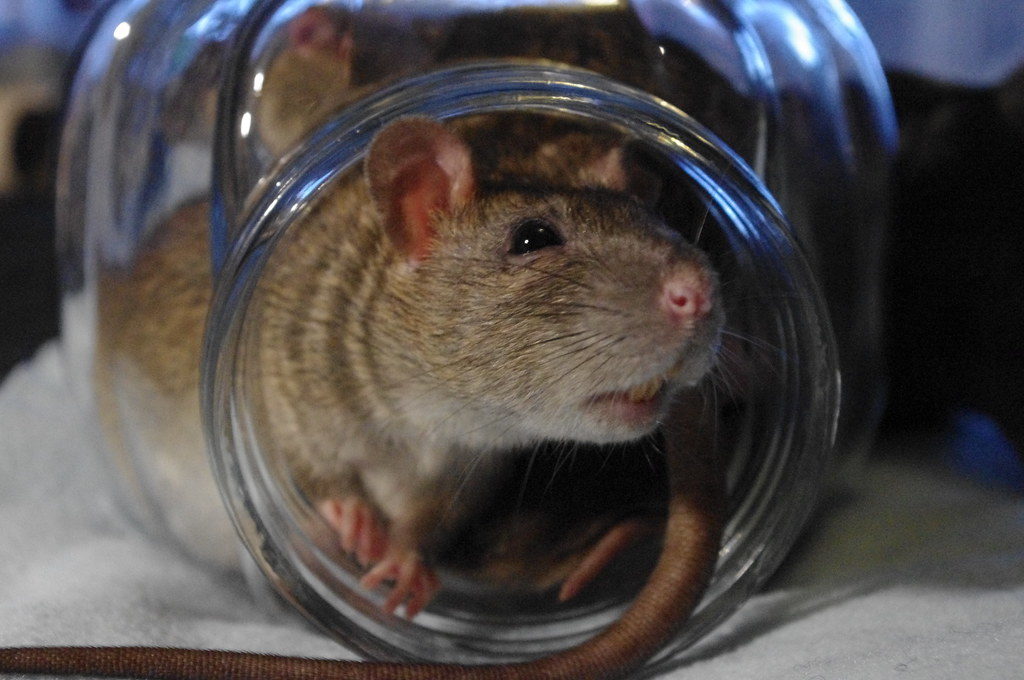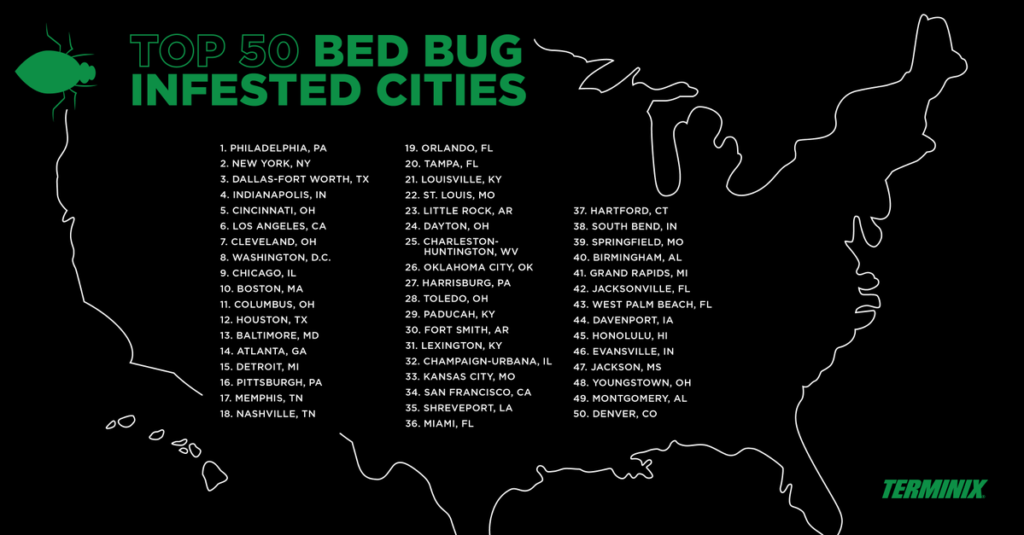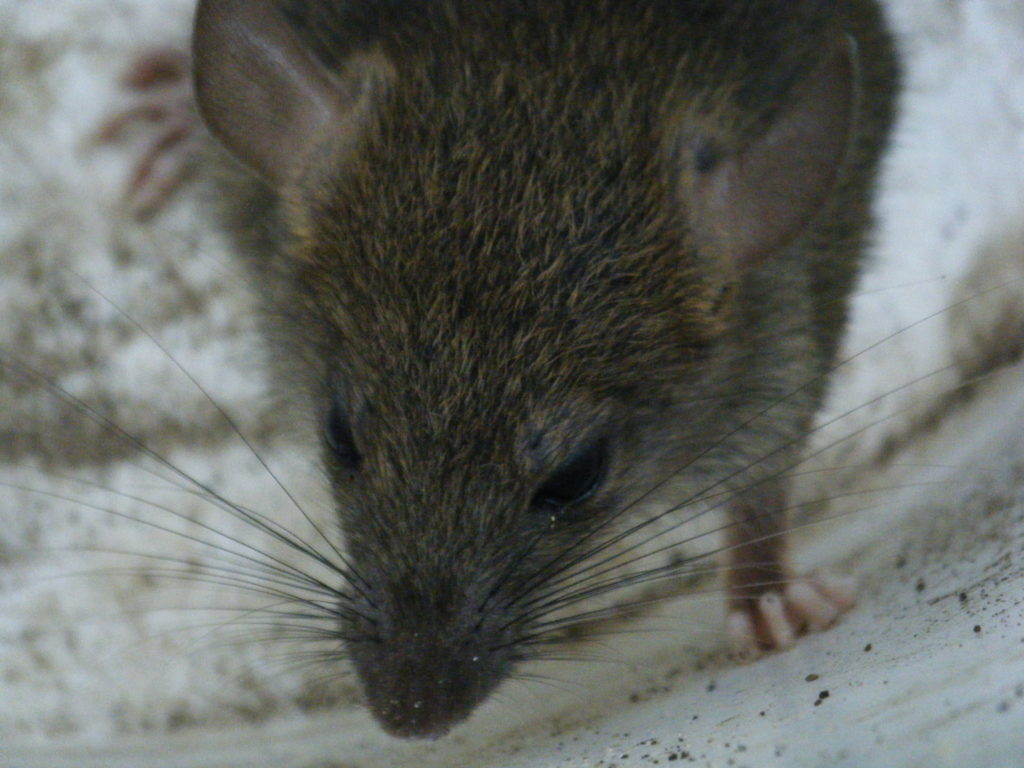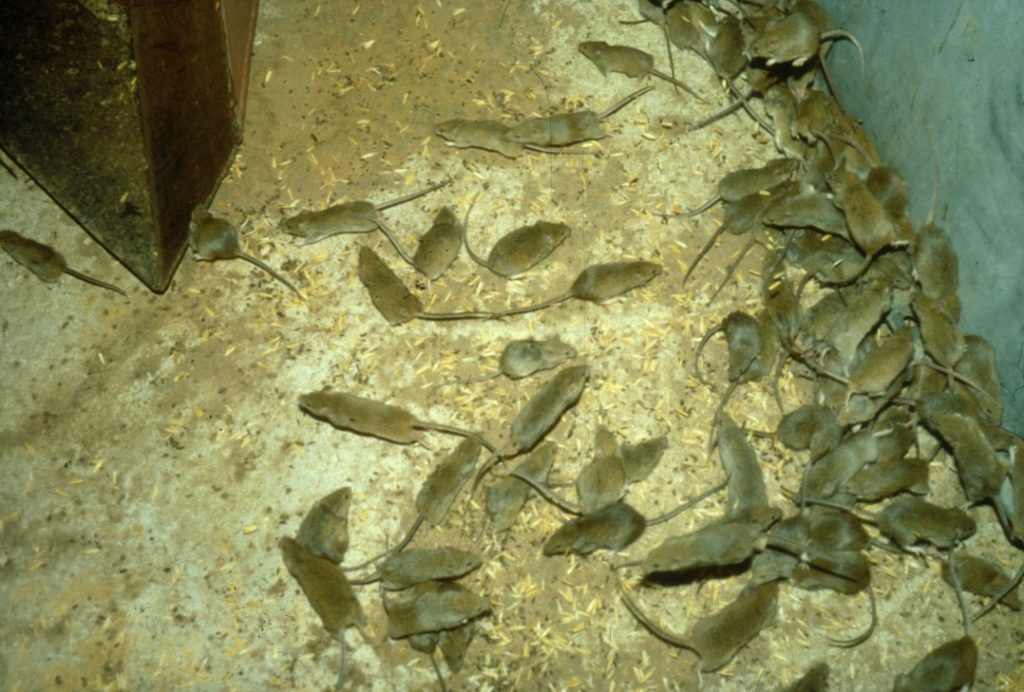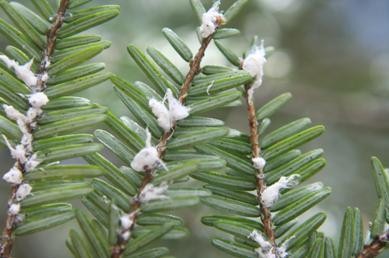
The hemlock woolly adelgid is a tiny aphid-like insect. Hemlock woolly adelgid, or HWA, is a member of the Sternorrhyncha suborder of the order Hemiptera and native to East Asia. As its name suggests, the hemlock wooly adelgid feeds on hemlock trees and spruce trees.
Barely visible to the naked eye, the insect and its egg sacs are covered with a waxy, white ‘wool’. The sacs, most prominent in late spring, look like the tips of small cotton swabs clinging to the base of hemlock needles. An adult individual body length is typically 0.8 mm and is oval in shape. The tiny brown-colored insect has four thread-like stylets that are bundled together and function as a mouthpart.
A tree infested with the hemlock wooly adelgid can die within a few years. This serious pest has destroyed thousands of acres of trees.
The hemlock woolly adelgid feeds on the sap at the base of the host tree’s needles. This disrupts the flow of nutrients, slows the growth and causes the tree’s dark green needles to discolor and turn grayish green, eventually falling off. Lack of nutrients causes the tree to starve to death, usually within three to ten years. It is quickest in areas where there are other pests, diseases or environmental stressors present.
The Hemlock Woolly Adelgid lives and feeds on hemlock trees, the eastern hemlock and Carolina hemlock neither of which are evolved to resist the pest. After the eggs hatch, the nymphs, or crawlers, move to the new needles of the tree and attach to the base of the needles to feed on the starch reserves and nutrients. This causes the needles to desiccate, dry up and prevents the growth of buds. The dead needles fall off, and the decrease of buds prevents new growth.
The hemlocks could also be reacting to the infestation by producing abnormal xylem, which could obstruct water movement and lead to the death of the tree because of water stress.
Insect in hemlock forests causes loss of canopy, gain of invasive plants
By Sarah Yang, Media Relations | 26 May 2009 -UC Berkley News
BERKELEY — Deep in the hemlock forests of the Eastern United States, a tiny, aphid-like insect may be playing a giant role in transforming an ecosystem, according to new research by ecologists at the University of California, Berkeley.
It’s been well-documented that the spread of the hemlock woolly adelgid, an exotic pest native to Asia and introduced to the Eastern United States in the 1950s, has led to a decline of the shade-providing canopy in forests of eastern hemlock trees. The insect (Adelges tsugae) sucks fluid from the base of hemlock needles, causing the needles to drop and the branches to die
The new study has found that this loss of canopy is also setting the stage for the successful invasion of non-native plants. The canopy decline leads to even greater invasion of non-native plants when combined with a high concentration of the plants’ seeds and white-tailed deer in the affected area.
Hemlock die-off having major impact in Smokies
By Morgan Simmons of the Knoxville News Sentinel July 11, 2016
TOWNSEND — On a recent summer afternoon, the Anthony Creek Trail at the west end of the Great Smoky Mountains National Park presented stark contrasts between sunlight and shadow.
Much of the trail was shaded beneath the branches, but in patches of forest where the hemlocks had died, the ground was bathed in bright light. Beneath these gaps in the canopy grew various sun-loving species like blackberry and wild grape. High winds had pruned the dead hemlocks of their limbs and their tops, and the trees still standing looked ready to fall, too.
Forests throughout the Smokies are undergoing a major ecological shift due to the hemlock die-off caused by the hemlock woolly adelgid, a nonnative forest insect pest that was discovered in the park in 2002. Trees that for years have suffered in a state of decline are now dead and toppling to the ground, creating a void that forestry experts say will affect everything from stream temperatures to forest composition.
Hemlocks are considered a “keystone” species, meaning that they play a critical ecological role. The dense shade provided by their branches keeps the soil underneath from drying out, creates cool habitat during the summer for plants and foraging animals, and protects the same areas during the winter from snow and wind, again providing habitat and food.
Control measures for forest trees are limited. Also, the used control measures are ineffective, but the damage is still on.
How to deal with this?
C Tech Corporation can offer an eco-friendly solution to problems from Hemlock Woolly Adelgid. Our product CombirepelTM is extremely low-toxic, low-hazard and insect aversive.
CombirepelTM is available in lacquer form. These products can be directly applied to the application as a topical application. It can be applied on the tree trunks to keep the trees safe from Hemlock Woolly Adelgid. The lacquer is compatible with most of the surfaces like wood, metal, concrete, polymers, ceramics, etc
Our CombirepelTM masterbatch can be incorporated with various polymeric applications like tree guards, pipes, wires and cables, agricultural and other protective films, etc. while they are manufactured. This will prevent the pests from damaging the polymeric application.
CombirepelTM is available in liquid concentrate can be mixed in paints and be applied to interior and exterior of houses, offices, kitchens, pantries, warehouses, bathrooms, attics, etc. It can be applied on the fences around the gardens, lawns, farms, etc.
Our product works on the mechanism of repellency. It temporarily inhibits the mating cycle of the insects. The product impairs the ability of the insects to reproduce, that is the insects will not lay eggs or the laid eggs will be infertile. The product causes feeding disruption in an insect by triggering an unpleasant reaction within the insect which might try to feed on the application. The product temporarily blocks the reproduction system of the insects by hindering the release of the vital hormones for growth.
Our product is compliant with RoHS, RoHS2, RoHS3, ISO, APVMA, NEA and REACH and is FIFRA exempted. The green technology-based product can protect our living spaces and prevent the loss caused by the Hemlock Woolly Adelgid and other insects as well.
Thus using our products you can get an effective solution to fight menace caused by HWA and many such insects!
Contact us below to get best results on fighting pest nuisance:
technical.marketing@ctechcorporation.com
Also, visit our websites:
http://www.ctechcorporation.com/
http://www.rodrepel.com/
http://www.termirepel.com/
http://www.combirepel.com/
Follow our Facebook pages at:
1] https://www.facebook.com/Combirepel-411710912249274/
2] https://www.facebook.com/Termirepel-104225413091251/
3] https://www.facebook.com/Rodrepel-120734974768048/
Follow us on our Twitter pages at:
1] https://twitter.com/rodrepel
2] https://twitter.com/termirepel
3] https://twitter.com/combirepel

